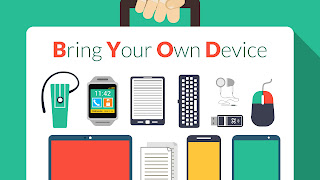Twitter Feed
Mobile device security: A new frontier for hackers
Recent security breaches have heightened our awareness of cybersecurity issues. The hack and other security breaches have resulted in unprecedented damages. However, the majority of mobile device users have yet to be sensitized…
Learn How To Buy Cloud From GovLoop & ViON
“Government IT managers must accept that cloud computing services are services, not the purchases of technology. This usually represents a fundamental change in how technology is acquired and managed. Since…
A VETS 360 BENEFIT – LATINO FILM INDUSTRY POST OSCAR PARTY
GUESS WHO SUPPORTS VETS 360? You can support them too at the: THE OFFICIAL LATINO FILM INDUSTRY POST OSCAR PARTY The Veterans 360 mission is to support our young combat…
South Asia’s Biggest Tech Event – “Digital World 2015”
I am proud and honored to announce that I have been added as a speaker at SouthAsia’s biggest tech event “Digital World 2015” , 9th – 12th February, 2015 at…
Fear Hackers? First invest in an IT security culture change
by Kevin L.Jackson With all the news these days about cyberterrorism and hacking the cloud may seem like the last place you would want to put your precious information. Pew…
CloudCamp Bangladesh In Dhaka! – February 11, 2015
Did you know that….. Goldman Sachs recognized Bangladesh as one of the Next Eleven (N-11) – a list of eleven countries having strong potential for becoming the world’s largest economies…
Agile is not the absence of ITIL!
by Jodi Kohut ITIL (formerlyknown as the Information Technology Infrastructure Library) has been the best management practices framework of choice for world class IT Operations organizations. The 5 stage framework:…
Cloud Security: Understanding the Cloud Computing Threat Landscape
In the last two years, IT security breaches have hit the White House, the State Department, the top federal intelligence agency, the largest American bank, the top hospital operator, energy…
Federal Cloud Computing Summit on January 14-15, Washington, DC
The Federal Cloud Computing Summit will be held on January 14-15, 2015 at the Marriott Metro Center in Washington, D.C. (Complimentary government and academic registration) This educational symposium will feature cloud computing…
CONGRATULATIONS! Inaugural Cloud Computing Class at Mira Costa College Graduates!!
Anthony Dorrah, Jose Chapman, Mike Chatelain, Lisa Heiden, Ginelle Johnson, Robert Minson, Alfredo Morales We are so proud of the success of out first cloud computing training class. This group…
- Increased employee mobility (63%), satisfaction (56%) and productivity (55%) dominate as the top drivers of BYOD. These employee related drivers are considered more important than reduced costs (47%).
- Security (39%) and employee privacy (12%) are the biggest inhibitors of BYOD adoption.
- 20% of surveyed organizations have suffered a mobile security breach, primarily driven by malware and malicious WiFi.
- Security threats to BYOD impose heavy burdens on organizations’ IT resources (35%) and help desk workloads (27%).
- Despite increasing mobile security threats, data breaches and new regulations, only 30% of organizations are increasing security budgets for BYOD in the next 12 months and 37% have no plans to change their security budgets.
- 72% – Data leakage/loss
- 56% – Unauthorized access to company data and systems
- 54% – Downloading of unsafe apps or content
- 52% – Malware
- 50% – Lost or stolen devices
- 49% – Vulnerability exploitation
- 48% – Lack of control on endpoint security
- 39% – Infrequent software updates
- 38% – Compliance
1. Create your policy before procuring technology: To effectively use mobile device management (MDM) technology for employee owned devices Policy must precede technology. Also note that these policies will have broad corporate-wide implications for IT, HR, legal, and security.
- Mobile device management
- Application security assessments
- Application testing services
- Application source code security assessments; and
- Embedded device security.
This post was brought to you by IBM Global Technology Services. For more content like this, visit ITBizAdvisor.com.
( Thank you. If you enjoyed this article, get free updates by email or RSS – © Copyright Kevin L. Jackson 2017)
Cloud Computing
- CPUcoin Expands CPU/GPU Power Sharing with Cudo Ventures Enterprise Network Partnership
- CPUcoin Expands CPU/GPU Power Sharing with Cudo Ventures Enterprise Network Partnership
- Route1 Announces Q2 2019 Financial Results
- CPUcoin Expands CPU/GPU Power Sharing with Cudo Ventures Enterprise Network Partnership
- ChannelAdvisor to Present at the D.A. Davidson 18th Annual Technology Conference
Cybersecurity
- Route1 Announces Q2 2019 Financial Results
- FIRST US BANCSHARES, INC. DECLARES CASH DIVIDEND
- Business Continuity Management Planning Solution Market is Expected to Grow ~ US$ 1.6 Bn by the end of 2029 - PMR
- Atos delivers Quantum-Learning-as-a-Service to Xofia to enable artificial intelligence solutions
- New Ares IoT Botnet discovered on Android OS based Set-Top Boxes


